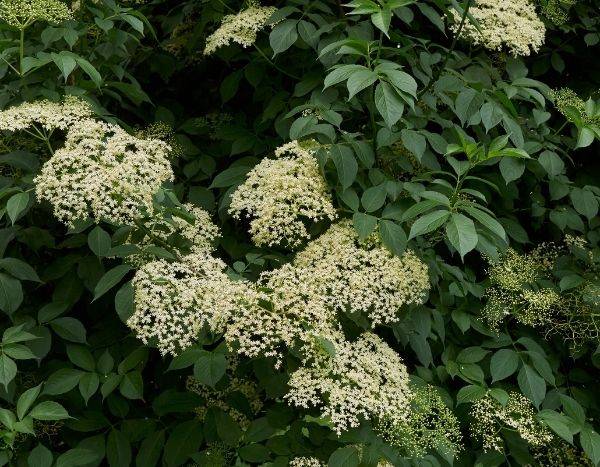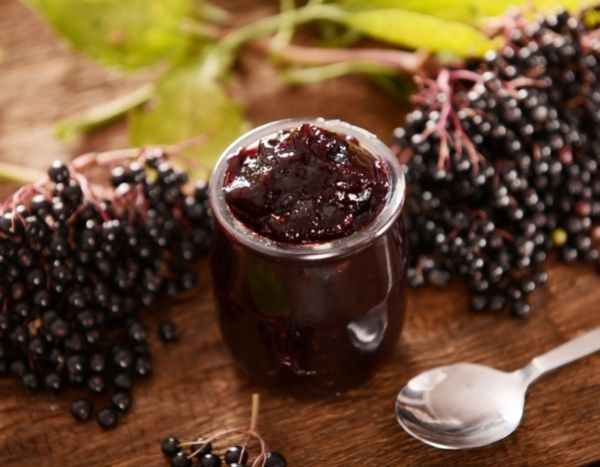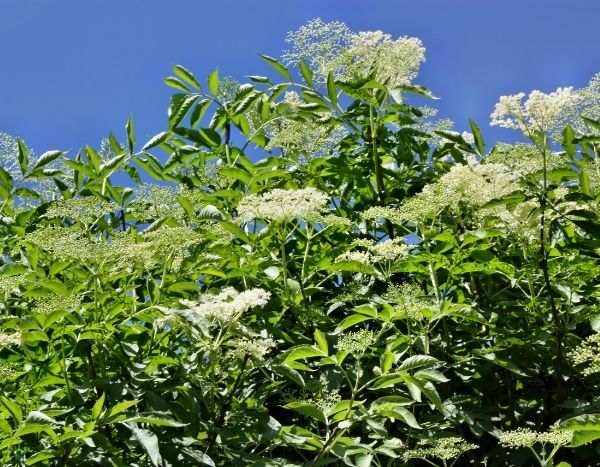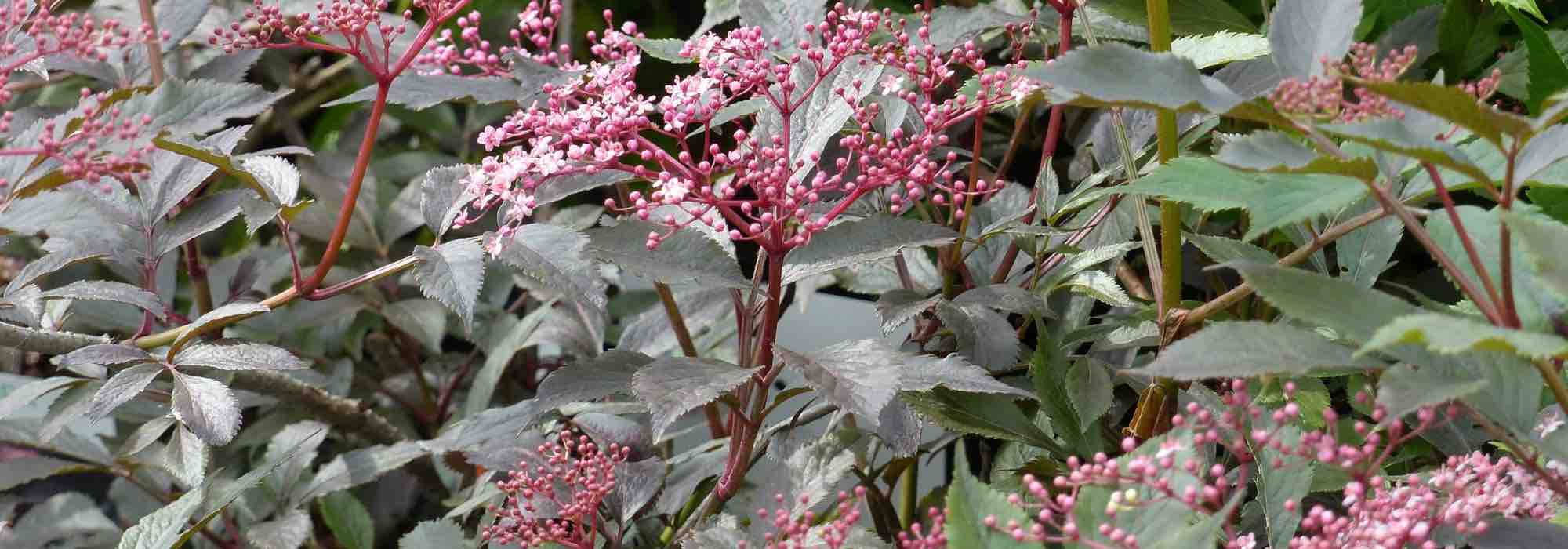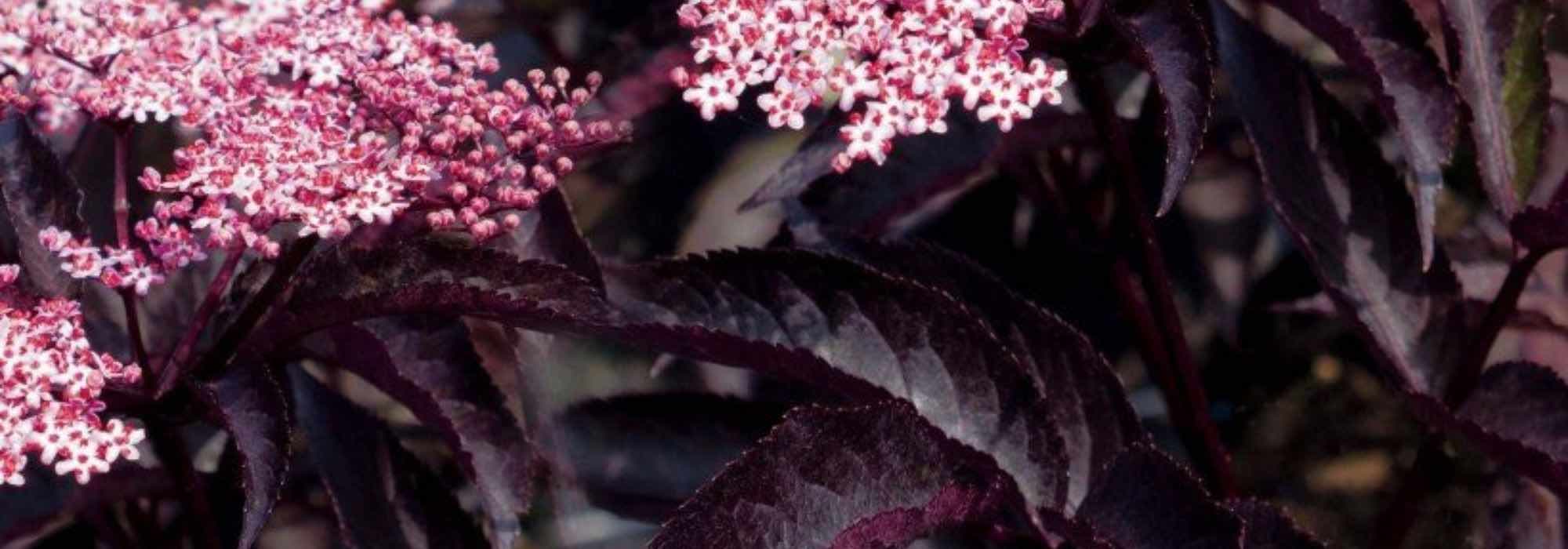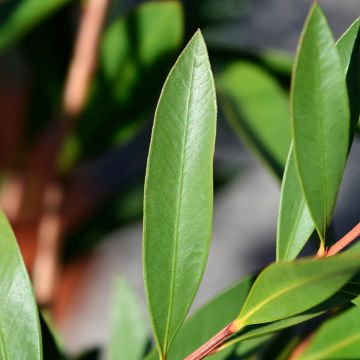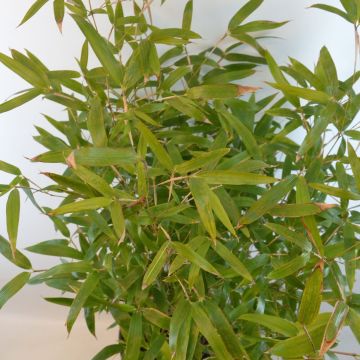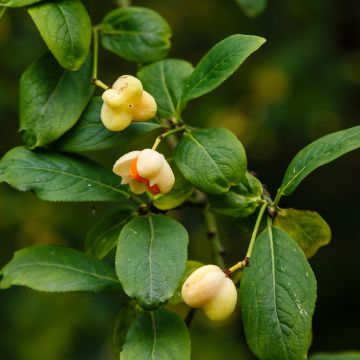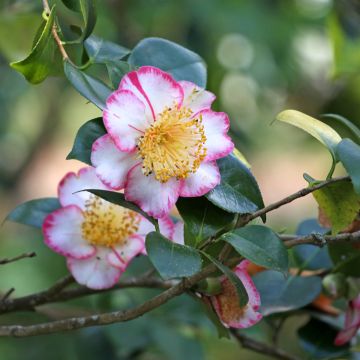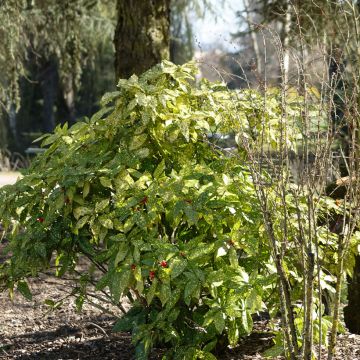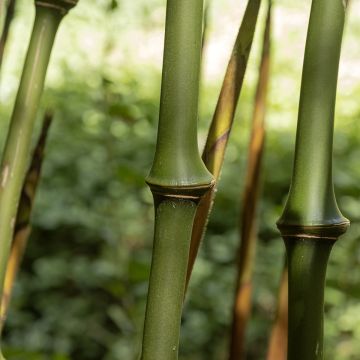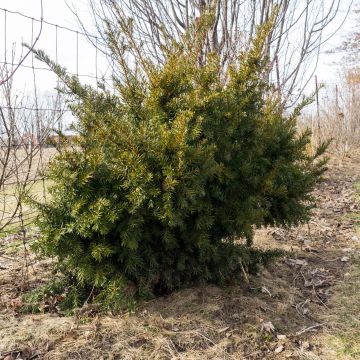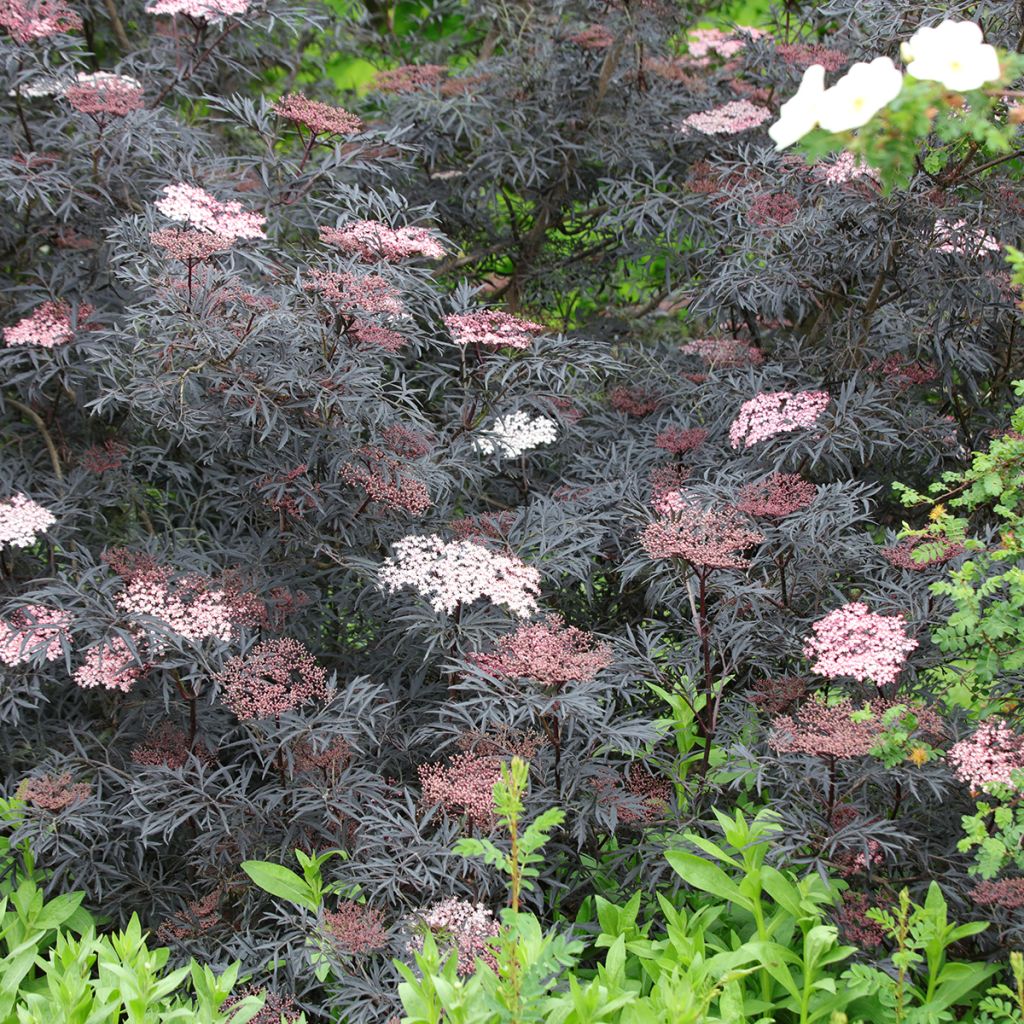

Sambucus nigra Black Lace - Black Elder
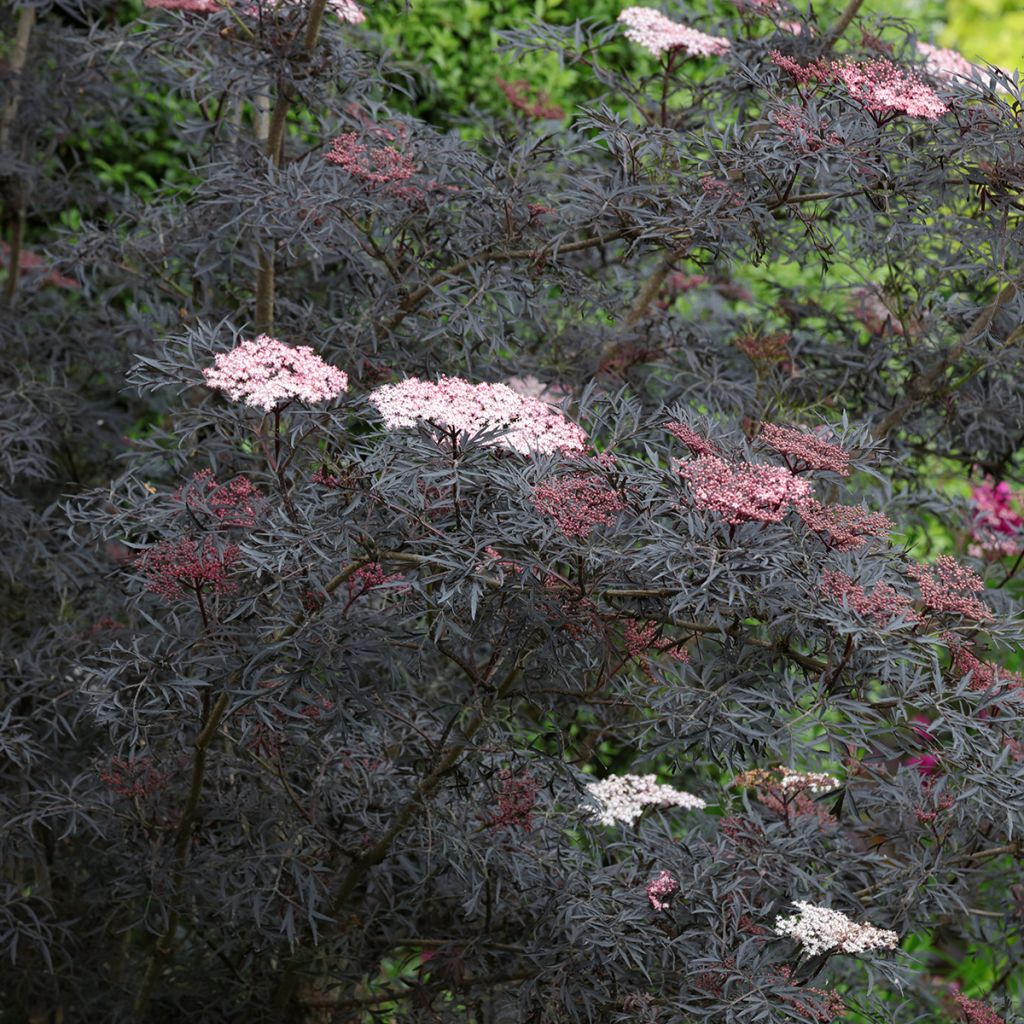

Sambucus nigra Black Lace - Black Elder
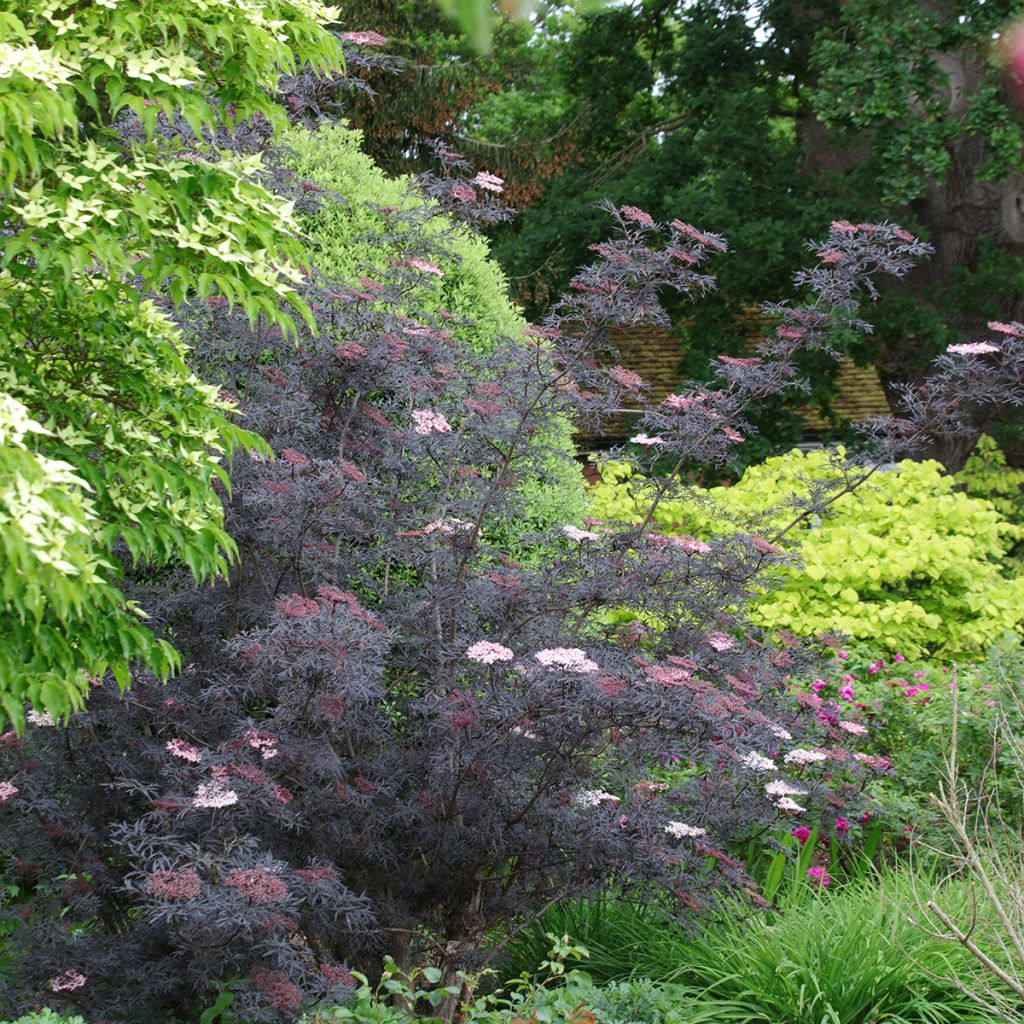

Sambucus nigra Black Lace - Black Elder
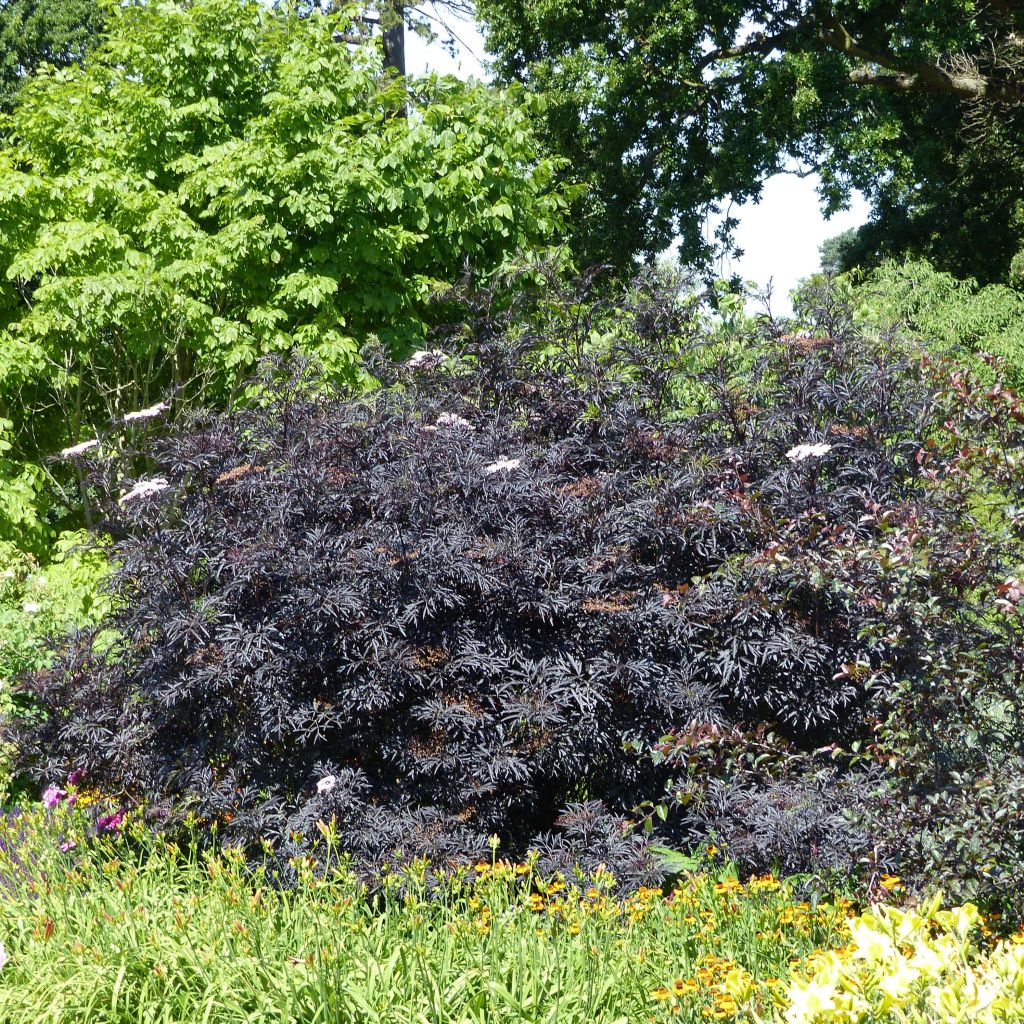

Sambucus nigra Black Lace - Black Elder
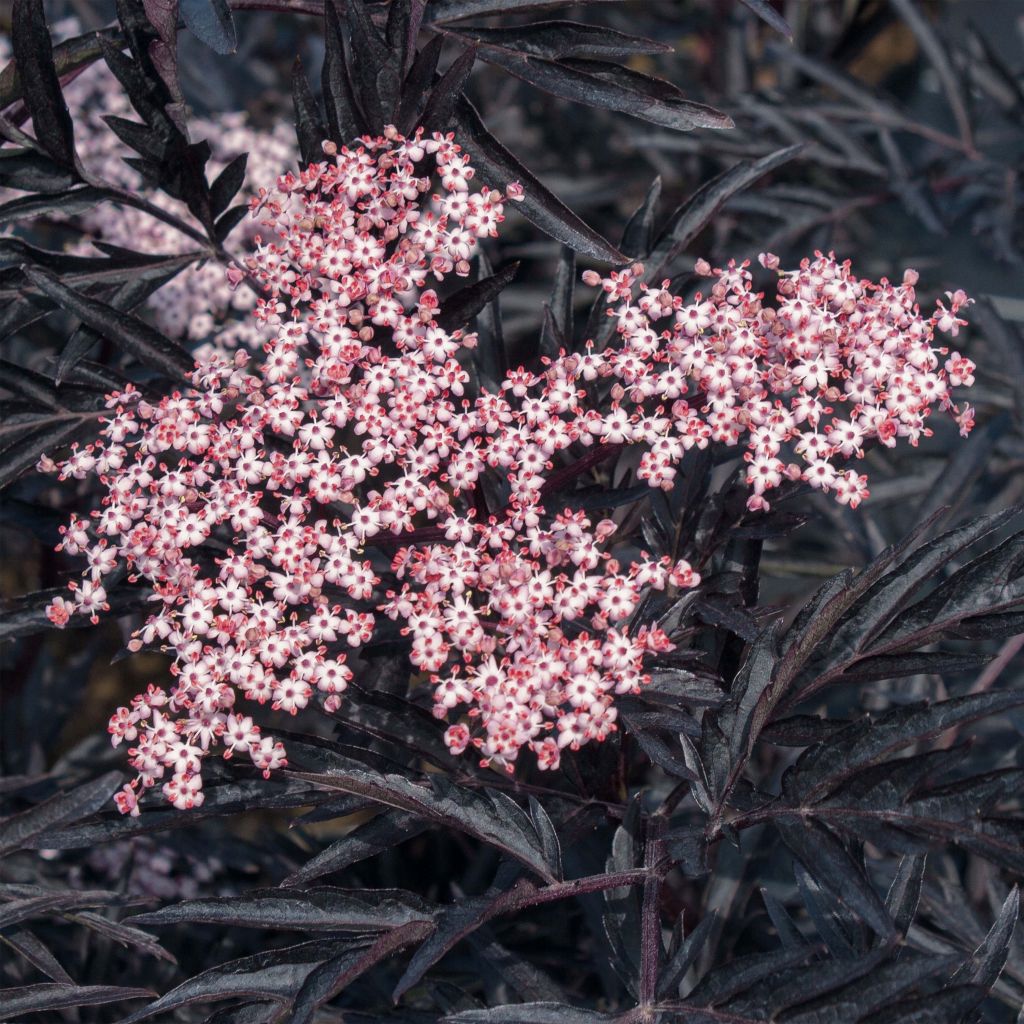

Sambucus nigra Black Lace - Black Elder
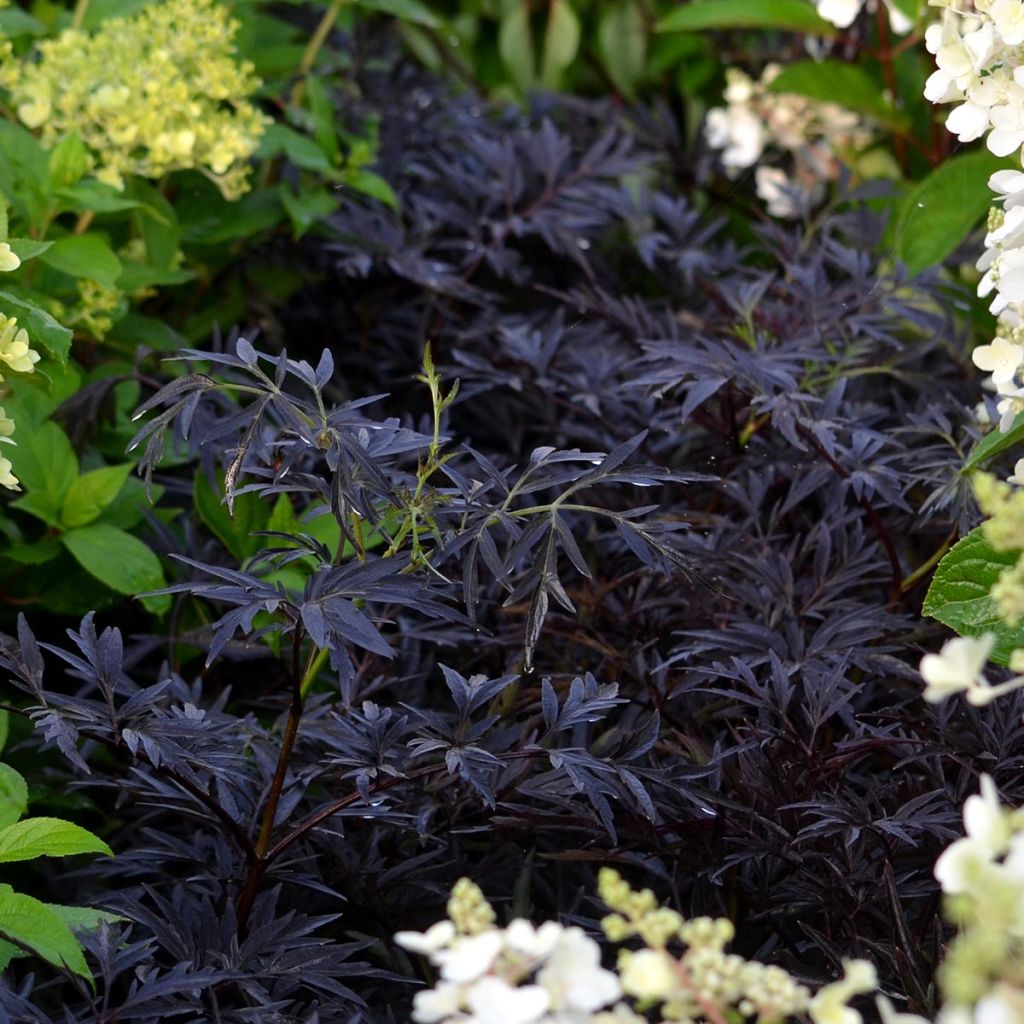

Sambucus nigra Black Lace - Black Elder
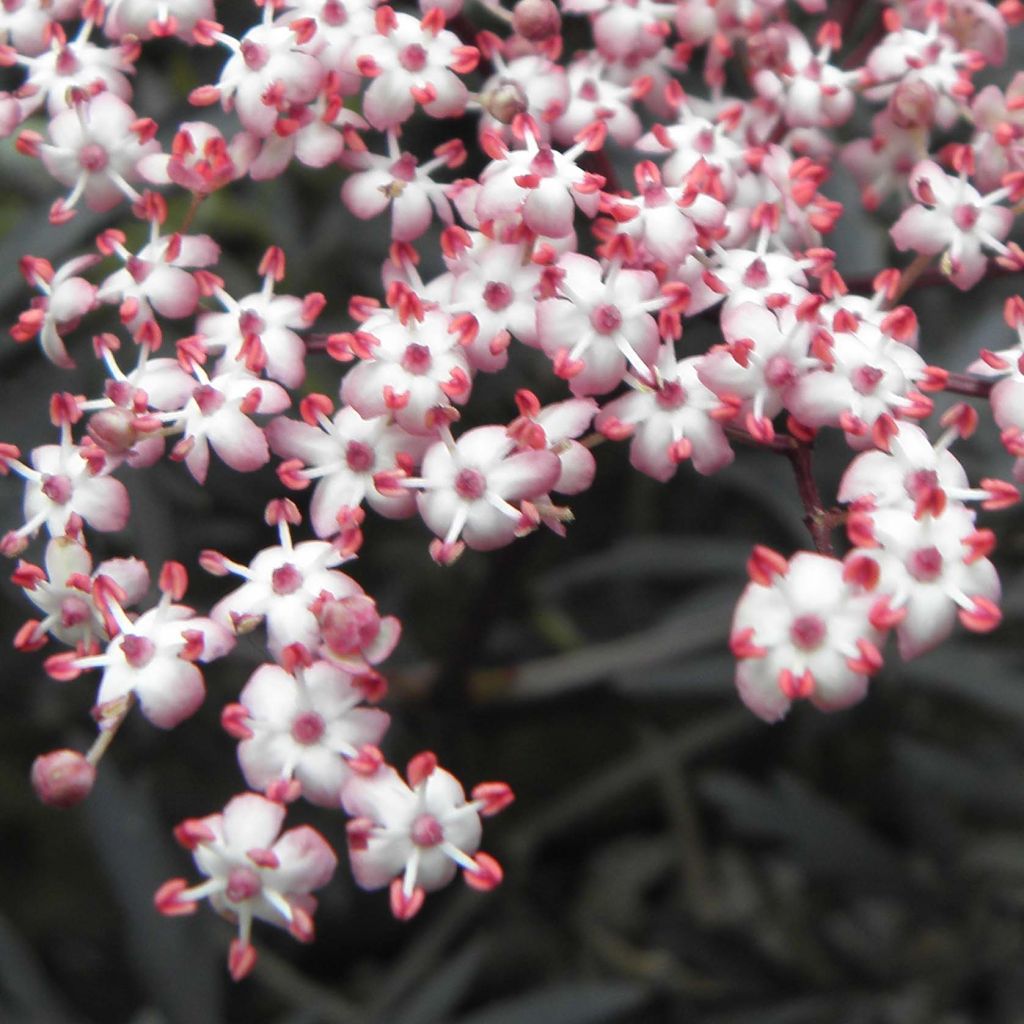

Sambucus nigra Black Lace - Black Elder
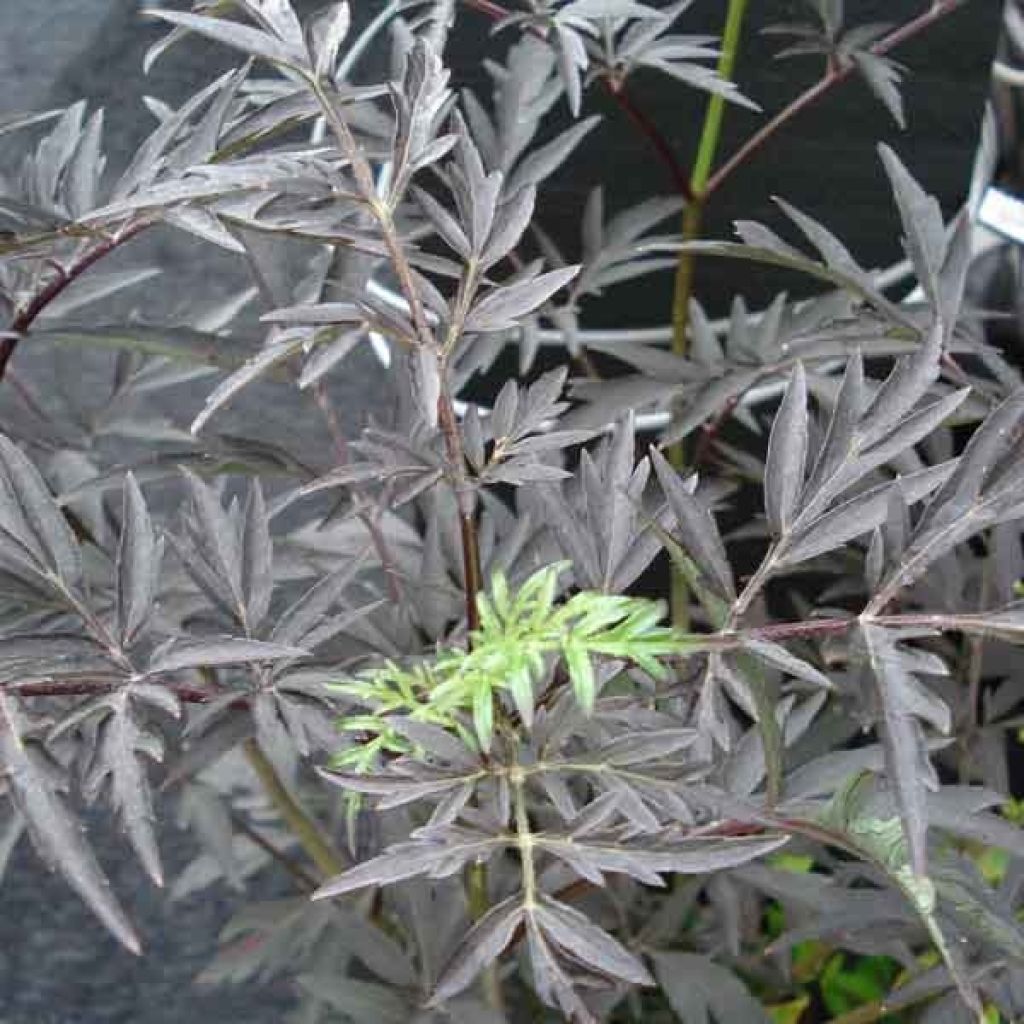

Sambucus nigra Black Lace - Black Elder
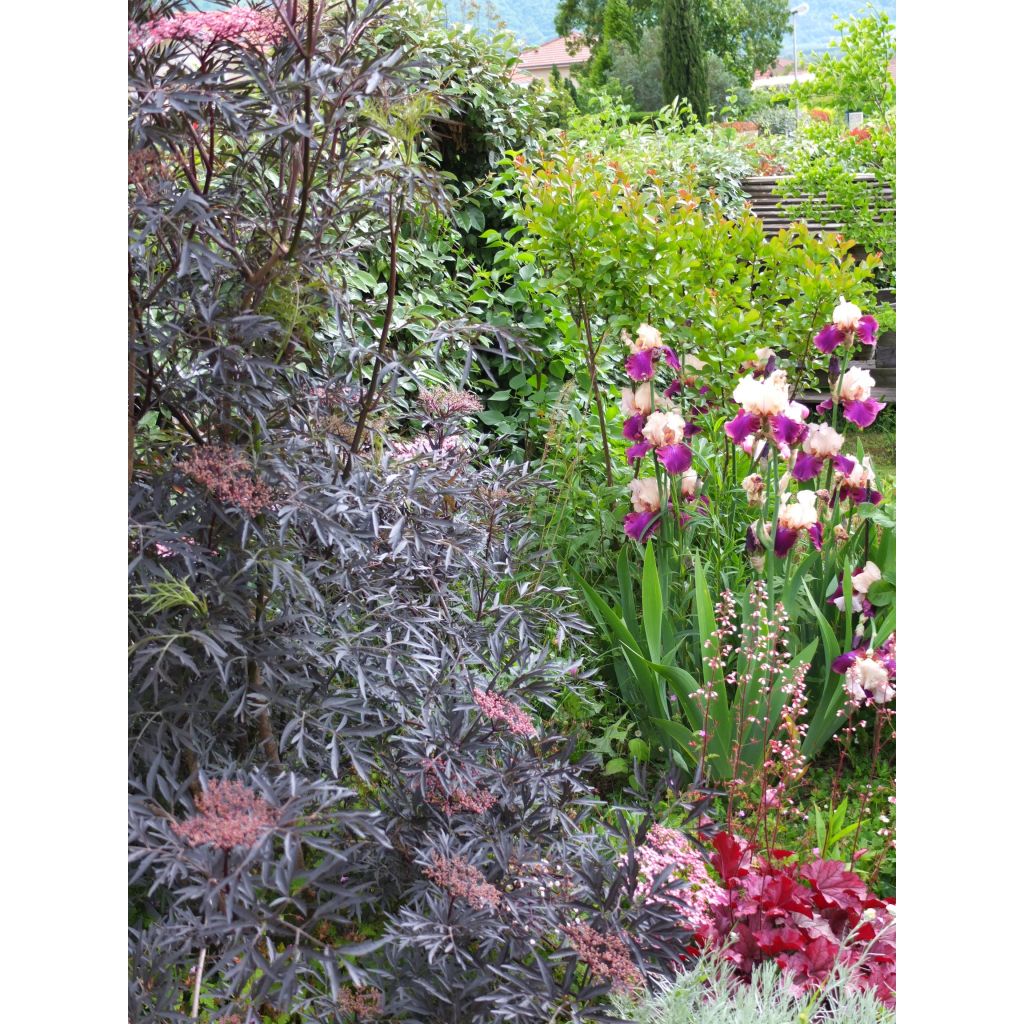

Sambucus nigra Black Lace - Black Elder
Sambucus nigra Black Lace - Black Elder
Sambucus nigra Eva (BLACK LACE)
European Elder, Black Elder, Elder, Elderberry, European Elderberry, European black Elderberry
Special offer!
Receive a €20 voucher for any order over €90 (excluding delivery costs, credit notes, and plastic-free options)!
1- Add your favorite plants to your cart.
2- Once you have reached €90, confirm your order (you can even choose the delivery date!).
3- As soon as your order is shipped, you will receive an email containing your voucher code, valid for 3 months (90 days).
Your voucher is unique and can only be used once, for any order with a minimum value of €20, excluding delivery costs.
Can be combined with other current offers, non-divisible and non-refundable.
Home or relay delivery (depending on size and destination)
Schedule yourself the delivery date,
and choose your date in cart
This plant benefits a 24 months rooting warranty
More information
We guarantee the quality of our plants for a full growing cycle, and will replace at our expense any plant that fails to recover under normal climatic and planting conditions.



Does this plant fit my garden?
Set up your Plantfit profile →
Description of Sambucus nigra Black Lace - Black Elder
The elderberry or Sambucus nigra Black Lace (Eva) is undoubtedly our favourite with its finely cut foliage in the manner of Japanese maples that retains its dark purple colour throughout the season. It is adorned in early summer with delicate pale pink umbels that fade to creamy white, beautifully highlighted by its dark foliage. They give way to red and then black berries that are a delight for birds. Very accommodating in terms of soil, and perfectly hardy, this shrub is comfortable in most gardens. It looks superb when placed alone or in a free-standing hedge.
Black Lace elderberry, produced in Great Britain in 2002, is a plant belonging to the Caprifoliaceae family, along with honeysuckles. It comes from Sambucus nigra, a wild species widespread in Europe, North Africa, and as far afield as Asia Minor. Black Elder is an opportunistic and highly adaptable species, found widely in clearings, hedges, fallow lands, coastal dunes, or near human settlements where it has coexisted for millennia. It is therefore undemanding and very easy to grow everywhere. It tolerates clay-limestone soils perfectly; even relatively dry ones if they are deep.
The 'Black Lace' form has a bushy and spreading habit, reaching about 2.5 m (8 ft) in height and 3 m (10 ft) in width, with a moderately fast growth rate depending on the growing conditions. Its woody branches are verrucate, greyish in colour, and filled with white pith. From spring to autumn, it bears particularly elegant foliage; its leaves are finely cut into many very thin, laciniate leaflets, of a very dark purple colour. Flowering usually occurs in June (a little earlier or later depending on the climate), in the form of very long-lasting false umbels, 10 to 12 cm (3.9 to 4.7 in) wide. The small, fragrant, 5-petalled flowers are a soft, old pink colour and are carried on red petioles. Over time, they lighten almost to white, creating a very pretty gradation on the bush. This flowering attracts many pollinating insects. The fruits, edible and tasty, are black to purplish berries with soft flesh, measuring 6 to 8 mm (0.2 to 0.3 in) in diameter.
Black Lace elderberry is an excellent free-standing hedge plant that is also worth planting alone, at the front of a large shrub border. Like all elderberries, it is very hardy and easy to combine with other spring- or summer-flowering shrubs, or as a backdrop for large perennials (Gunneras, Ligularia, large ferns in moist soil) or along a path. You can also keep it in a large pot or container for 3 or 4 years. It can be combined, for example, with lilacs, mock oranges, flowering apple trees, Prunus, landscape roses or wild roses (burnet, hugonis, moyesii, rugosa, rubrifolia), viburnums, Weigela florida 'Variegata', and many other shrubs.
In the kitchen: the flowers can be prepared in fritters or syrup by macerating them in sugar. The vinegar-pickled buds are used to enhance salads, and the berries are consumed as juice, jelly or jam, or in wine. They give a pleasant perfume to apple cakes. Only the flowers and berries without their petioles are edible as the rest of the plant can be toxic.
In the garden:
Elder leaves are known to accelerate compost decomposition. Black elder leaf infusion is useful in organic gardening to fight against mildew and aphid attacks, or rodents: macerate 1 kg of leaves for a few days in 10 L of water, and spray as needed. It can also be planted in an orchard, where it attracts insect-eating birds.
Sambucus nigra Black Lace - Black Elder in pictures
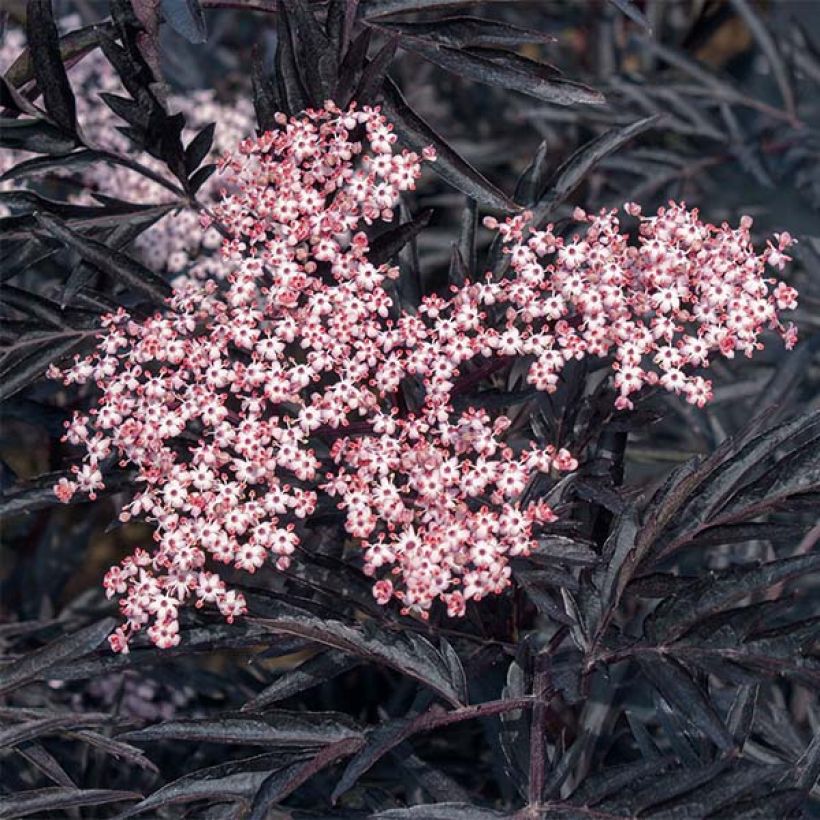

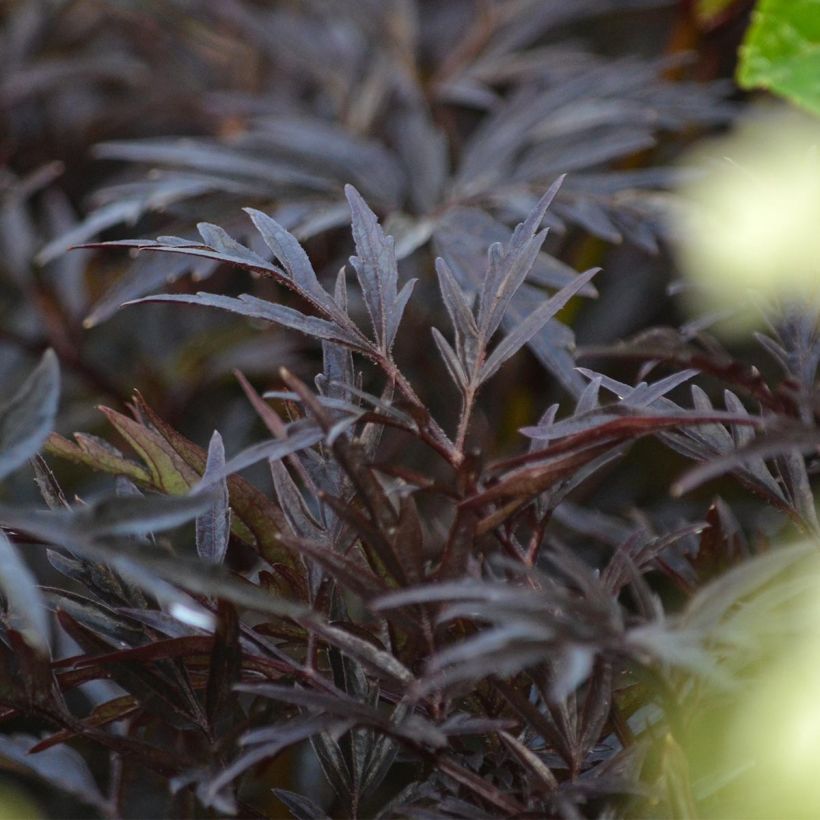

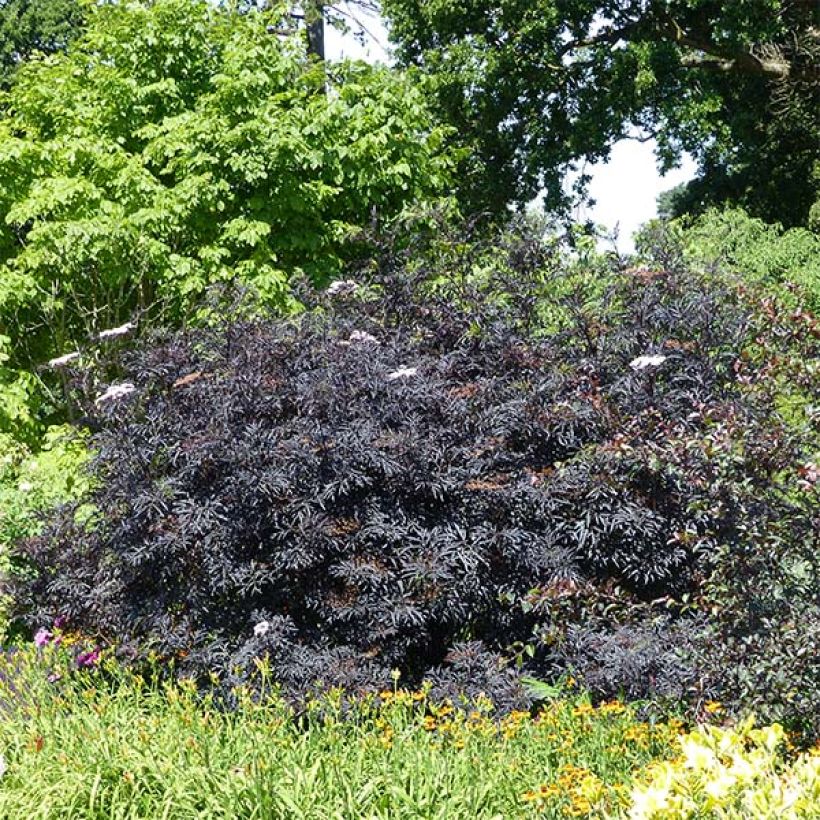

Plant habit
Flowering
Foliage
Botanical data
Sambucus
nigra
Eva (BLACK LACE)
Viburnaceae
European Elder, Black Elder, Elder, Elderberry, European Elderberry, European black Elderberry
Cultivar or hybrid
Planting of Sambucus nigra Black Lace - Black Elder
Easy to grow, Black Lace elderberry can be planted in spring or autumn, in any ordinary, sufficiently deep soil that is not too poor or dry, even though it is fairly tolerant of periods of temporary drought in deep soil once well established. It is very hardy and requires little maintenance. Plant it in a sunny or semi-shaded position; hot and arid positions are not recommended. It is not demanding on the soil, accepting clay, limestone, sand, and even degraded soils. The ideal planting mix is half compost/half garden soil. To encourage flowering, prune old branches to rejuvenate them and cut back young branches by a third in late winter.
It can be targeted by elder aphids (Aphis sambuci), whose natural predator is the two-spot ladybird Coccinella bipunctata. This very specific aphid does not infest other plants in the garden. There is often an edible mushroom called Judas's ear (Auricularia auricula-judae) found on the black elderberry.
When to plant?
Where to plant?
Care
Planting & care advice
-
, onVetted order
Response from on Promesse de fleurs
Similar products
You have not found what you were looking for?
Hardiness (definition)

Photo Sharing Terms & Conditions
In order to encourage gardeners to interact and share their experiences, Promesse de fleurs offers various media enabling content to be uploaded onto its Site - in particular via the ‘Photo sharing’ module.
The User agrees to refrain from:
- Posting any content that is illegal, prejudicial, insulting, racist, inciteful to hatred, revisionist, contrary to public decency, that infringes on privacy or on the privacy rights of third parties, in particular the publicity rights of persons and goods, intellectual property rights, or the right to privacy.
- Submitting content on behalf of a third party;
- Impersonate the identity of a third party and/or publish any personal information about a third party;
In general, the User undertakes to refrain from any unethical behaviour.
All Content (in particular text, comments, files, images, photos, videos, creative works, etc.), which may be subject to property or intellectual property rights, image or other private rights, shall remain the property of the User, subject to the limited rights granted by the terms of the licence granted by Promesse de fleurs as stated below. Users are at liberty to publish or not to publish such Content on the Site, notably via the ‘Photo Sharing’ facility, and accept that this Content shall be made public and freely accessible, notably on the Internet.
Users further acknowledge, undertake to have ,and guarantee that they hold all necessary rights and permissions to publish such material on the Site, in particular with regard to the legislation in force pertaining to any privacy, property, intellectual property, image, or contractual rights, or rights of any other nature. By publishing such Content on the Site, Users acknowledge accepting full liability as publishers of the Content within the meaning of the law, and grant Promesse de fleurs, free of charge, an inclusive, worldwide licence for the said Content for the entire duration of its publication, including all reproduction, representation, up/downloading, displaying, performing, transmission, and storage rights.
Users also grant permission for their name to be linked to the Content and accept that this link may not always be made available.
By engaging in posting material, Users consent to their Content becoming automatically accessible on the Internet, in particular on other sites and/or blogs and/or web pages of the Promesse de fleurs site, including in particular social pages and the Promesse de fleurs catalogue.
Users may secure the removal of entrusted content free of charge by issuing a simple request via our contact form.
The flowering period indicated on our website applies to countries and regions located in USDA zone 8 (France, the United Kingdom, Ireland, the Netherlands, etc.)
It will vary according to where you live:
- In zones 9 to 10 (Italy, Spain, Greece, etc.), flowering will occur about 2 to 4 weeks earlier.
- In zones 6 to 7 (Germany, Poland, Slovenia, and lower mountainous regions), flowering will be delayed by 2 to 3 weeks.
- In zone 5 (Central Europe, Scandinavia), blooming will be delayed by 3 to 5 weeks.
In temperate climates, pruning of spring-flowering shrubs (forsythia, spireas, etc.) should be done just after flowering.
Pruning of summer-flowering shrubs (Indian Lilac, Perovskia, etc.) can be done in winter or spring.
In cold regions as well as with frost-sensitive plants, avoid pruning too early when severe frosts may still occur.
The planting period indicated on our website applies to countries and regions located in USDA zone 8 (France, United Kingdom, Ireland, Netherlands).
It will vary according to where you live:
- In Mediterranean zones (Marseille, Madrid, Milan, etc.), autumn and winter are the best planting periods.
- In continental zones (Strasbourg, Munich, Vienna, etc.), delay planting by 2 to 3 weeks in spring and bring it forward by 2 to 4 weeks in autumn.
- In mountainous regions (the Alps, Pyrenees, Carpathians, etc.), it is best to plant in late spring (May-June) or late summer (August-September).
The harvesting period indicated on our website applies to countries and regions in USDA zone 8 (France, England, Ireland, the Netherlands).
In colder areas (Scandinavia, Poland, Austria...) fruit and vegetable harvests are likely to be delayed by 3-4 weeks.
In warmer areas (Italy, Spain, Greece, etc.), harvesting will probably take place earlier, depending on weather conditions.
The sowing periods indicated on our website apply to countries and regions within USDA Zone 8 (France, UK, Ireland, Netherlands).
In colder areas (Scandinavia, Poland, Austria...), delay any outdoor sowing by 3-4 weeks, or sow under glass.
In warmer climes (Italy, Spain, Greece, etc.), bring outdoor sowing forward by a few weeks.


































